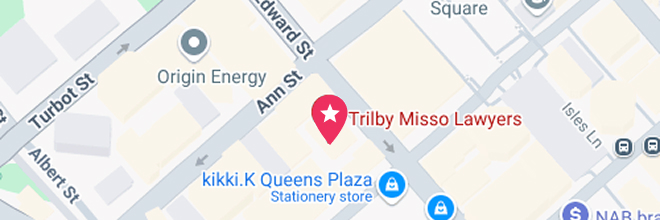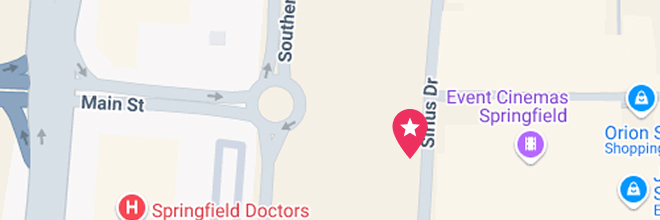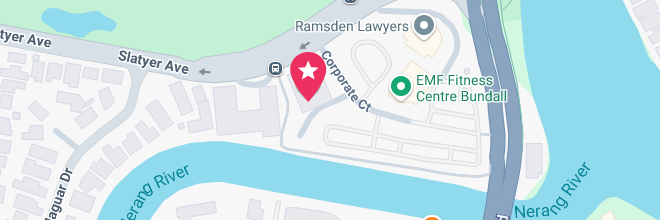Our Brisbane CBD Office
- Suite 400, Level 4/288 Edward St, Brisbane City QLD 4000
- (07) 3910 5470




If you’ve been involved in a car accident in Queensland, understanding third party insurance is crucial — especially when it comes to protecting your right to compensation. Third party insurance, also known as Compulsory Third Party (CTP) insurance, covers injuries caused to other people in a motor vehicle crash. Whether you’re a driver, passenger, pedestrian, motorcyclist or cyclist, if you’ve been harmed in a road incident and someone else was at fault, you may be able to make a personal injury claim.
In most cases, the at-fault driver’s third party insurer is responsible for paying compensation, and this process is regulated under Queensland’s CTP scheme. But navigating the legal process, time limits, and requirements for evidence can be overwhelming — especially if you’re dealing with injuries or financial stress at the same time. That’s where a clear understanding of your entitlements can make a big difference.
This guide explains what third party insurance is, who can claim, what you might be eligible for, and how the claims process works in Queensland. Whether you were in a minor collision or a more serious accident, knowing your legal rights and responsibilities is essential for securing a fair outcome.
We’ll also cover how personal injury lawyers — including no win, no fee lawyers — can assist you during the process, and what to do next if you think you may have a claim.
If you’re injured in a road crash in Queensland, third party insurance — officially known as Compulsory Third Party (CTP) insurance — is what enables you to claim compensation for your injuries. Every registered vehicle in Queensland must have CTP insurance. This isn’t optional — it’s built into your vehicle registration. The scheme is regulated under the Motor Accident Insurance Act 1994.
CTP insurance covers compensation for people injured or killed in a crash caused by someone else. It does not cover property damage. So if you’ve been hurt in a car accident and another driver was responsible, their CTP insurer is the one that pays your compensation — not the driver personally.
This applies to:
Public transport passengers
The at-fault party’s CTP insurer covers medical costs, rehabilitation, lost income, and other losses. If the other vehicle wasn’t registered or insured, your claim would be made against the Nominal Defendant, a government-backed scheme designed for situations involving unidentified or uninsured vehicles.
There are currently four licensed CTP insurers in Queensland:
Allianz
Suncorp
QBE
RACQ
You don’t choose which insurer pays you — it depends on who was at fault and who their insurer is. But you do have legal rights to pursue a personal injury claim, and CTP laws ensure that eligible claimants are protected.
CTP only covers injuries — not car repairs or property damage.
Claims must meet strict time limits.
The insurer must accept liability for compensation to be paid.
In Queensland, you can make a car accident injury claim under CTP insurance if you were hurt in a road crash and someone else was at least partly at fault. This applies whether you were behind the wheel, in the passenger seat, on foot, or even on a bike or scooter.
Drivers of other vehicles (when another driver caused the crash)
Passengers in any vehicle involved
Pedestrians hit by a vehicle
Cyclists or motorcyclists injured by a motor vehicle
Public transport passengers
Family members (in fatal cases, dependants of the deceased may claim)
It’s important to note that the injury must be caused by the use of a motor vehicle on a road or in a public place — for example, a car crash at an intersection or a pedestrian hit in a shopping centre carpark.
Emma was walking her dog when a driver ran a red light and struck her at a crossing. She suffered a fractured leg and required surgery. Although she wasn’t in a car, Emma could still claim compensation under the at-fault driver’s CTP insurance — because she was a pedestrian injured due to someone else’s driving.
Generally, no. The person who caused the crash can’t claim under their own CTP policy. However, if fault is shared, the less-responsible party may still claim partial compensation. For example, if both drivers were speeding and contributed to the accident, both might still have some entitlements — but the payout will be reduced under the principle of contributory negligence.
Whiplash and soft tissue injuries
Fractures and broken bones
Spinal injuries
Concussion or brain trauma
PTSD, anxiety, or depression
Even psychological injuries without physical harm — such as witnessing a serious crash — may be claimable.
Car accident claims in Queensland don’t just involve two cars colliding — there are many situations where someone can be hurt and eligible for compensation through a CTP claim. Whether you’re a pedestrian or a passenger on a bus, if another party is at fault, you’re likely covered.
This includes:
Rear-end collisions
T-bone crashes at intersections
Failure to give way
Fatigued or distracted driving
Example:
Mark was stopped at a red light in Brisbane when another car failed to brake in time and hit him from behind. He suffered whiplash and lower back pain. As the other driver was at fault, Mark lodged a car accident injury claim through that driver’s CTP insurer.
Motorcyclists are vulnerable on the roads. Even a low-speed collision can cause serious injuries due to the lack of protection.
Example:
A car merged into Jade’s lane on the highway without checking their blind spot, knocking her off her motorbike. She broke her collarbone and missed work for six weeks. She was eligible to claim through the car driver’s third party insurer.
Cyclists can claim if hit by a motor vehicle — even when riding in bike lanes or footpaths.
Example:
Tom was riding in a marked bike lane when a parked car suddenly opened its door, knocking him into traffic. He suffered a concussion. Despite the driver being stationary, their action caused the incident — and CTP insurance still applied.
Anyone hit by a vehicle while walking or crossing the road can generally make a CTP claim.
Example:
An elderly woman was crossing at a pedestrian crossing when a car failed to stop in time. Her broken wrist and anxiety afterwards were both claimable under CTP.
Passengers injured on buses, trains, or ferries may also be eligible. This includes injuries from sudden braking or falls on board.
Example:
Aaron was standing on a Brisbane bus when it stopped abruptly. He fell and dislocated his shoulder. Even though there was no crash, the CTP insurer for the bus company could still be liable.
Even if the at-fault vehicle is unknown, victims may be able to claim against the Nominal Defendant, a government insurer for these types of cases.
Example:
Lena was hit while jogging, and the driver sped off. She reported the accident to police and lodged a claim under the Nominal Defendant scheme, which is available for unidentified or uninsured vehicles.
Lodging a compensation claim after a car accident in Queensland involves more than just filling out a form — it’s a process with several key steps, and it’s important to get them right. Here’s what you need to know if you’ve been injured and want to claim through the at-fault party’s CTP insurer.
Even if you feel fine, get checked. Some injuries (like whiplash or concussion) don’t show symptoms straight away — but your medical records will be vital evidence later on.
The accident must be reported to police, especially if anyone was injured. You’ll need a QP (Queensland Police) event number to include with your claim.
Before lodging your claim, collect:
Photos of the accident scene
Contact details of any witnesses
Your medical records and hospital notes
Evidence of lost wages or time off work
Registration and insurer details of all vehicles involved
Sophie was injured in a T-bone crash where another driver failed to stop at a give-way sign. She took photos at the scene, went to hospital the same day, and asked for a copy of the police report. Later, her GP helped her complete the necessary forms, and she lodged her claim through the at-fault driver’s insurer, Suncorp.
To lodge a CTP claim, you need to submit a Notice of Accident Claim Form (NOAC) to the relevant insurer. This form includes:
Your version of the incident
Medical certificate
Proof of income loss (if claiming for wages)
Injury details from your GP or specialist
You can download this form directly from the insurer’s website (e.g. Allianz, QBE, Suncorp, RACQ) or have a personal injury lawyer help complete it for you.
In Queensland, you must submit your NOAC form within:
1 month of consulting a lawyer, or
9 months from the date of the crash
(Whichever comes first)
If you miss these deadlines, you’ll need to give a valid reason — otherwise, you may lose your right to claim.
When you’re injured in a motor vehicle accident and another party is at fault, you’re entitled to claim compensation through their CTP insurance. But many people don’t realise just how many types of losses can be included in a claim. It’s not just about medical bills — it’s about getting back what the crash has taken from your daily life, work, and wellbeing.
This includes:
Ambulance fees
GP visits and specialist appointments
Hospital stays and surgery costs
Physiotherapy or chiropractic care
Prescription medications
Psychological counselling
Ongoing rehab or home modifications
If your injury forced you to take time off work, you can claim:
Lost wages (past and future)
Lost superannuation
Loss of future earning capacity
Darren worked as a delivery driver when he was rear-ended by another vehicle. He tore a shoulder ligament and couldn’t work for three months. His claim included medical treatment, physio, and lost wages — including the overtime and super he missed out on.
These may seem small but add up quickly:
Parking or transport to medical appointments
Over-the-counter medication or pain relief
Cleaning, lawn care, or other household support if you’re unable to do it yourself
If you’ve needed help around the house (even from family members), you can claim for that too — especially if the help exceeds 6 hours a week for 6 months or more.
This covers the non-financial side of your injuries, such as:
Physical pain
Emotional distress
Reduced quality of life
Anxiety or depression caused by the crash
The amount is assessed using the Injury Scale Value (ISV) system, which rates your injury on a scale from minor to severe.
No — property damage (like your car repairs or damaged belongings) is not covered by CTP. You’ll need to claim that through your comprehensive insurance or negotiate with the at-fault driver separately.
Strict legal deadlines apply to car accident claims in Queensland, and missing them could mean losing your right to compensation entirely. These timeframes are set out under the Motor Accident Insurance Act 1994, and they apply whether you’re claiming as a driver, passenger, cyclist, pedestrian, or other road user.
You must submit this form to the at-fault driver’s CTP insurer:
Within 9 months of the date of the accident, or
Within 1 month of consulting a lawyer — whichever comes first
If you miss this deadline, you’ll need to provide a valid explanation for the delay (e.g. delayed diagnosis, hospitalisation, or psychological trauma).
If your claim isn’t resolved out of court, you must start legal proceedings:
Within 3 years from the date of the accident
This is the general limitation period for personal injury claims in Queensland. After that point, your claim will likely be statute-barred.
Alex was hit while cycling home from work but didn’t realise his shoulder pain was serious until several months later. He saw a lawyer at the 8-month mark and lodged his NOAC form within the one-month window. Because he acted within the legal timeframe, his claim was still valid — even though he was close to the deadline.
For minors (under 18), the 3-year limitation period doesn’t begin until they turn 18. However, parents or guardians can lodge a claim on their behalf much earlier — and it’s usually in the child’s best interest to do so, especially for medical treatment or long-term care.
Hit and run claims: If you’re claiming through the Nominal Defendant, the deadline is shorter — you generally must notify within 3 months, and absolutely no later than 9 months.
Work-related vehicle accidents: If the crash happened during your job, you may also need to lodge a WorkCover claim. Different timeframes may apply.
One of the most common questions people ask after a crash is: “How much will I get?” The truth is, there’s no one-size-fits-all payout. Your compensation depends on the specific details of your accident, your injuries, and how those injuries affect your life now and in the future.
Type and severity of your injury
Length of time off work
Ongoing treatment or rehab needs
Impact on your ability to work or care for yourself
Emotional and psychological effects
Contributory negligence (if you were partially at fault)
Natalie suffered a broken leg and PTSD after a head-on crash caused by a drunk driver. She was off work for six months and still can’t return to her old job. Her compensation included lost income, future loss of earning capacity, extensive rehab costs, and general damages for emotional trauma.
Your payout may cover:
Medical bills (past and future)
Lost income and superannuation
Home care or support services
Travel to medical appointments
Pain and suffering
Impact on lifestyle and quality of life
While every case is different, here’s a rough guide based on past data:
| Injury Severity | Example Injuries | Estimated Average Payout |
|---|---|---|
| Minor | Whiplash, bruising | $20,000 – $85,000 |
| Moderate | Fractures, ligament damage | $85,000 – $180,000 |
| Serious | Head trauma, spinal injuries | $180,000 – $350,000 |
| Severe/Critical | Amputation, brain injury, paraplegia | $350,000 – $1.5M+ |
Note: These figures are examples only and depend on the unique circumstances of your case.
Yes. If you were partly at fault — for example, not wearing a seatbelt or riding without a helmet — your final compensation may be reduced by a percentage.
How long does it take to settle a car accident injury claim in Queensland?
Most CTP claims in Queensland settle within 9–18 months, depending on how severe your injuries are and whether liability is accepted by the insurer.
Can I still make a claim if I wasn’t in a car during the crash?
Yes — pedestrians, cyclists, passengers, and even e-scooter riders can claim if they were injured due to someone else’s driving.
Do I need a lawyer to make a third party claim?
You’re not legally required to have a lawyer, but most people find it helpful. Insurers can be difficult to deal with, and a personal injury lawyer can help make sure you’re treated fairly and receive the compensation you’re entitled to.
Queensland Government – CTP Insurance Overview
Learn about how CTP insurance works, what it covers, and who’s eligible.
https://www.qld.gov.au/transport/registration/insurance/ctp
Queensland Legislation – Motor Accident Insurance Act 1994
Read the full legislation governing CTP and third party claims in Queensland.
https://www.legislation.qld.gov.au/view/html/inforce/current/act-1994-031
WorkCover Queensland – Work-Related Motor Vehicle Accidents
Information on what to do if your motor vehicle crash happened during work duties.
https://www.worksafe.qld.gov.au/claims-and-insurance/work-related-accidents/motor-vehicle-accidents
Kathryn is Trilby Misso’s Chief Executive Officer.
Meet KathrynUse this simple online tool and find out if you have a claim in less than thirty seconds. You can choose to remain anonymous.
Your next step is a small one. All you need to do is give us a call on 07 3910 5470 or complete this form here to arrange a quick chat.
During this initial conversation, we will:

We understand that taking legal action can be stressful, and we’ll do all we can to ease your concerns.
The chat can take place at our place, your place, or by phone. There is no cost, no pressure, and no obligation.
Call 07 3910 5470 or fill out this form, and we’ll get back to you within 2 hours (during business hours). We look forward to meeting you.
enquire now